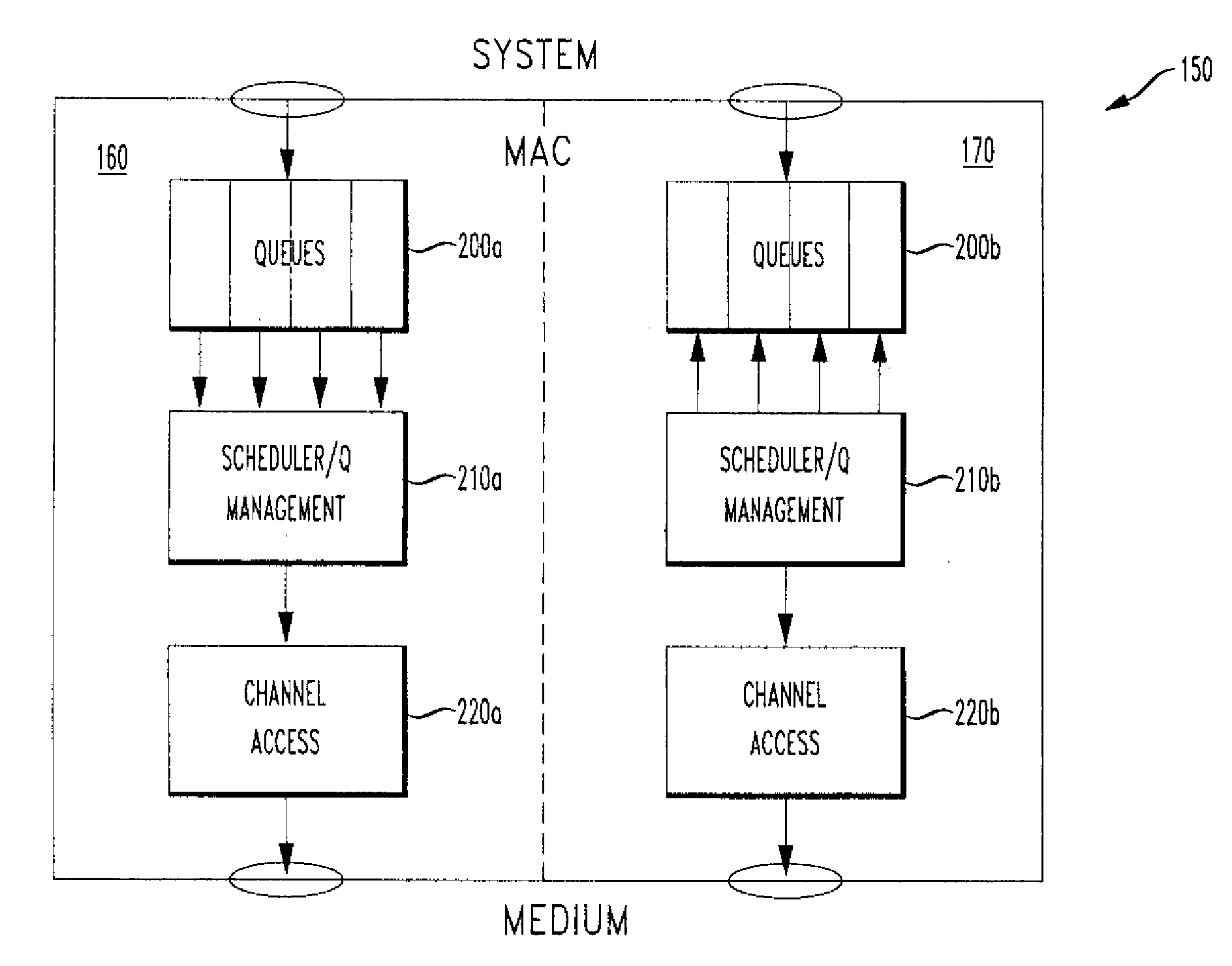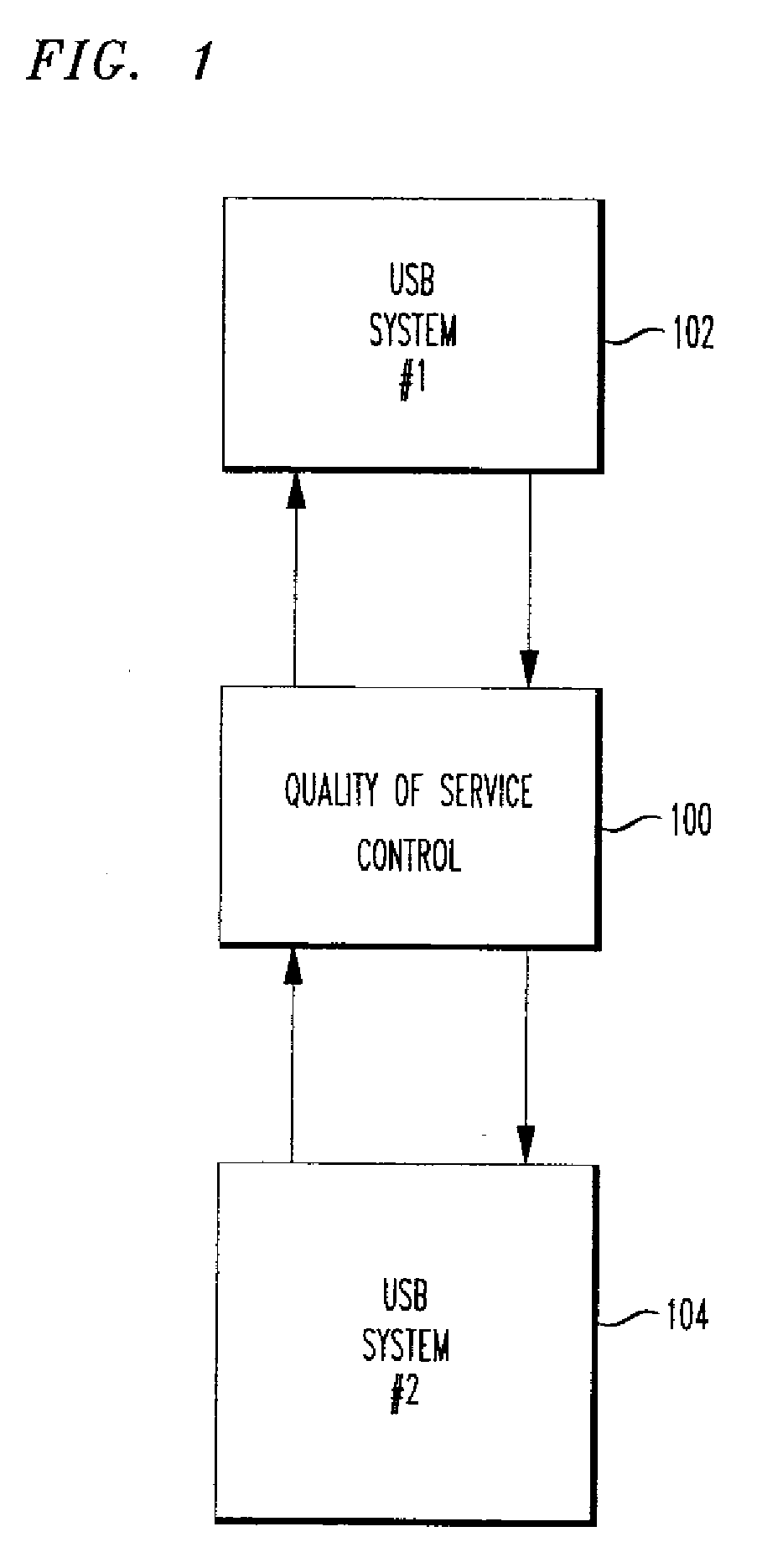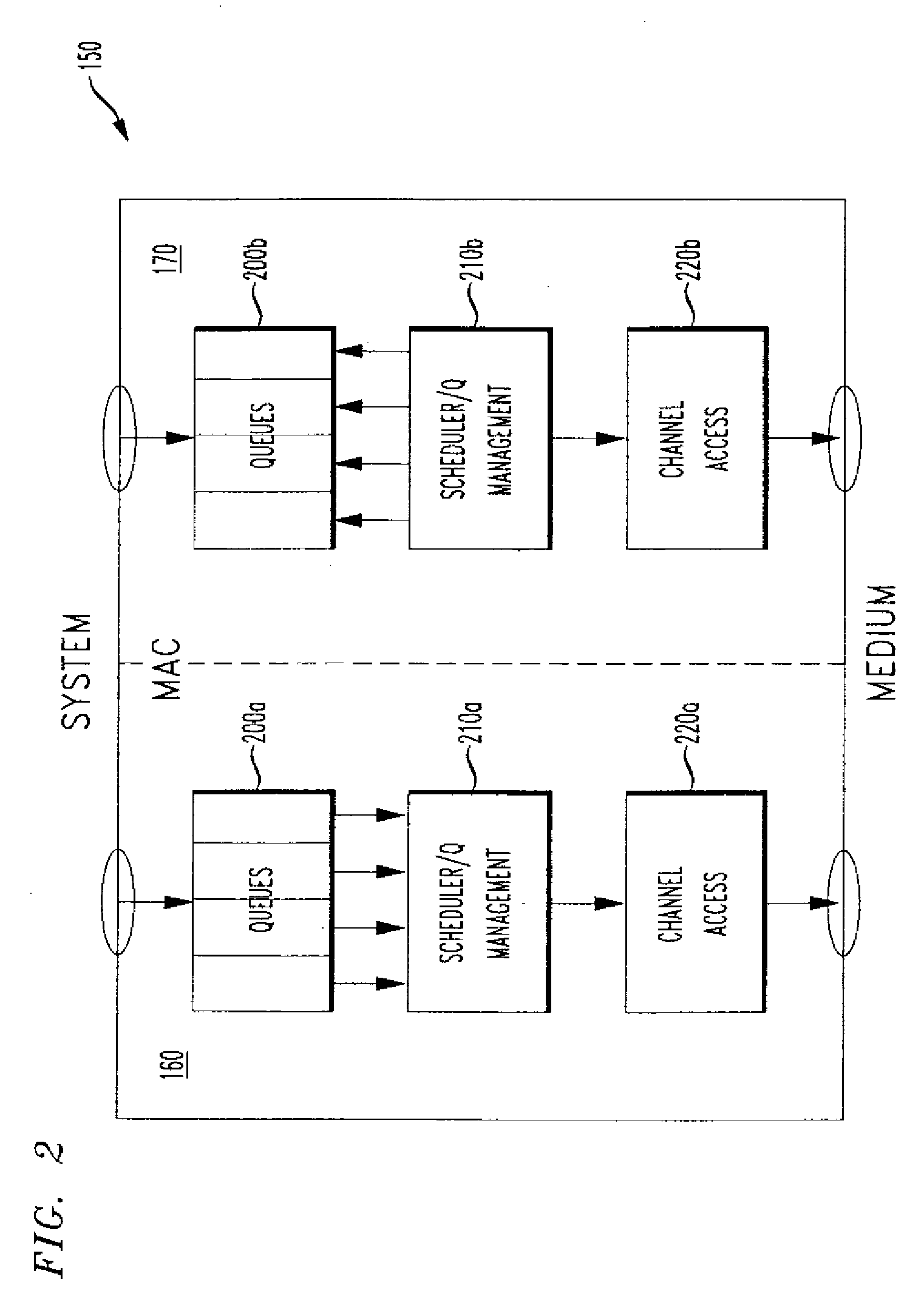Techniques for managing priority queues and escalation considerations in USB wireless communication systems
a technology of priority queues and wireless communication systems, applied in the field ofqueuing systems, can solve problems such as the inability to easily insert frames, the loss of some efficiency of data communication handling, and the complex nature of data systems
- Summary
- Abstract
- Description
- Claims
- Application Information
AI Technical Summary
Problems solved by technology
Method used
Image
Examples
Embodiment Construction
[0025]The invention provides a method to resolve Quality of Service issues in emerging high-speed USB-based communications systems by offering support for multiple queue management within the system. A further embodiment provides an escalation mechanism for the purposes of mitigating low priority class data starvation in these communications systems, when it becomes an issue.
[0026]Currently USB-based communications systems operate as a scheduled or reserved medium, meaning that scheduling methods are used to reserve USB bandwidth for devices in an on-demand fashion.
[0027]FIG. 1 shows that the present invention introduces Quality of Service (QoS) mechanisms and facilities 100 allowing communications between two USB-based wireless Local Area Networking (LAN) communication systems 102, 104. In particular, techniques are provided for managing multiple priority queues in USB-based wireless communications systems, and for ensuring that lower priority traffic is not precluded from accessin...
PUM
 Login to View More
Login to View More Abstract
Description
Claims
Application Information
 Login to View More
Login to View More - R&D
- Intellectual Property
- Life Sciences
- Materials
- Tech Scout
- Unparalleled Data Quality
- Higher Quality Content
- 60% Fewer Hallucinations
Browse by: Latest US Patents, China's latest patents, Technical Efficacy Thesaurus, Application Domain, Technology Topic, Popular Technical Reports.
© 2025 PatSnap. All rights reserved.Legal|Privacy policy|Modern Slavery Act Transparency Statement|Sitemap|About US| Contact US: help@patsnap.com



